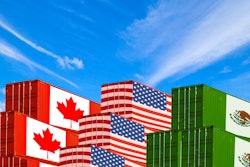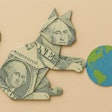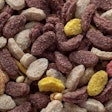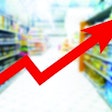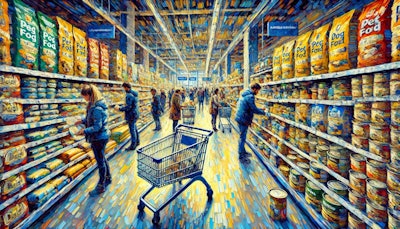
I learned a new term this week: “doom-spending.” Unlike a similar phrase, “doom-scrolling,” which refers to immersing oneself in online accounts of negative news and happenings already taking place, doom-spending seems to apply to anticipatory behavior and events. Growing economic uncertainty, especially that tied to the potential effects of impending U.S. tariffs, is driving some consumers to alter their buying habits, including stocking up on certain goods and making bigger purchases.
That’s according to a couple of new surveys. One, from CreditCards.com, a firm that proposes to help consumers find the “right credit card” for them, showed that 19% of 2,000 U.S. respondents said they’re buying significantly more (5%) or slightly more (14%) than usual. Of those, 29% said fear of the tariffs enacted or announced by President Trump “greatly impacts their desire to make additional purchases, while 37% say it’s having some impact,” according to CreditCards.com.
Tariffs are not the only thing spurring purchasing changes. About 30% of these Americans reported spending more in preparation for another pandemic — likely driven by the spread of highly pathogenic avian influenza, or HPAI, from birds to cows and other mammals like cats and humans.
Data and anecdotes: Is ‘doom-spending’ real?
Other results of the CreditCards.com survey include:
- 42% of these Americans are stocking up or plan to stockpile some items, mainly non-perishable food and toilet paper (oh, remember those early COVID-19 days?), followed by medical supplies and over-the-counter medications. Pet food did not appear on the list.
- About 25% said they’ve made large purchases since November 2024, when Trump was elected after campaigning on raising tariffs.
- 23% said they expect to go into credit card debt in 2025, or expect their existing debt to worsen.
These are all fairly low percentages, with none breaking the 50% mark. Initially, after reading through the results, I wondered if the survey had been fielded in search of data to fit a narrative. But then I came across a corroborating survey, from YouGov, showing that 27% of 3,320 U.S. adults have made, or plan to make, purchases because they expect prices to increase due to the tariffs. Another 29% said they’re not sure, with 44% saying no, they didn’t expect to do so.
Also, 67% of the respondents said they expect the prices of goods they typically purchase to increase as a result of the tariffs, with 13% being not sure, 17% saying they believe prices will stay the same and 4% saying they’ll decrease.
For anecdotal evidence, I mentioned my discovery of the doom-spending term to a colleague, and she deemed it an accurate description, saying she and her husband have been discussing whether to replace their 2013 car before/in case planned 25% automotive tariffs go into effect.
‘Incredible uncertainty’ creates not-so-positive vibes
Whether doom-spending will become an actual, lasting outcome depends on many factors. But that uncertainty is never a positive, for consumers or businesses, including in pet food and other sectors. Many of my colleagues attended the International Poultry Processing Exchange in late January and reported that multiple people they talked to from other companies expressed concern over the unknowns related to tariffs, HPAI and other issues. “Incredible uncertainty” is how one described it, adding that businesses seem ready to invest but don’t know where or how to do so now.
Similarly, another colleague, attending a different show recently, spoke with people from pet food companies based outside of North America who said they had been on the cusp of establishing a presence in the U.S. or expanding their existing business here, but did not feel safe doing so now. One commented that the U.S. was just a risky place to do business these days.
All of these anecdotes are just that, and certainly not firm indicators of something actually happening in the marketplace. Yet there seems to be a definite vibe taking hold, among businesses and consumers alike, and such feelings and perceptions do drive actions by both groups. The fact that inflation, including for pet food, is starting to creep up again doesn’t help.
What might help is some information and educational offerings we’re planning on several of these issues. (Yes, shameless plug here!) Please watch for:
- An article on PetfoodIndustry.com reporting on the January 2025 pet food consumer price changes, along with costs for pet food producers;
- An Ask the Pet Food Pro chat on how processing technologies can help pet food producers guard against HPAI risks;
- A Trending: Pet Food podcast episode with Ernie Tedeschi, director of economics for the Budget Lab at Yale University, who will likely share his lab’s outlooks on tariffs and other economic issues that could affect pet food;
- Tedeschi’s opening keynote, a macroeconomic outlook for the pet food market, at Petfood Forum 2025 on April 29.




